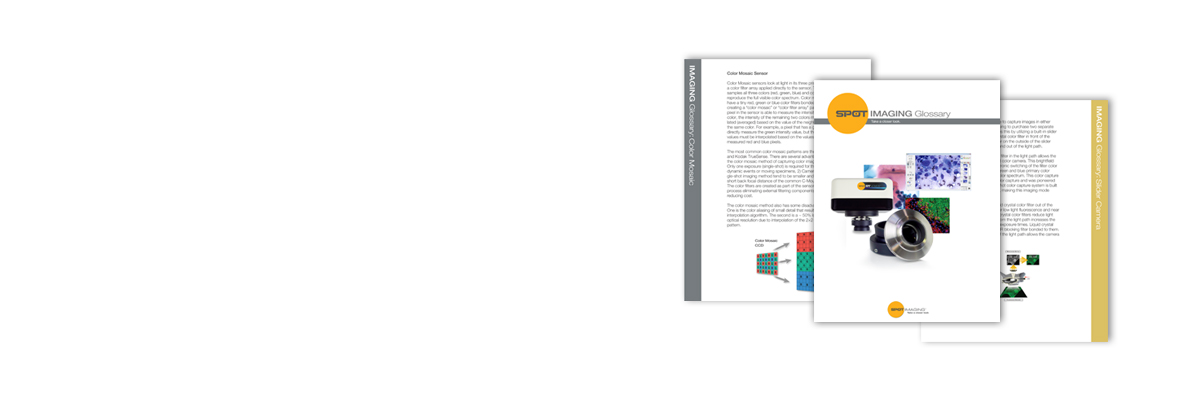Color Slider Camera
A slider camera makes it possible to capture images in either color or monochrome without having to purchase two separate cameras. A slider camera achieves this by utilizing a built-in slider mechanism that holds a liquid crystal color filter in front of the monochrome CCD sensor. A lever on the outside of the slider camera “slides” the color filter in and out of the light path.
Positioning the liquid crystal color filter in the light path allows the camera to perform as a brightfield color camera. This brightfield capability is achieved via the electronic switching of the filter color and subsequent capture of red, green and blue primary color planes that make up the visible color spectrum. This color capture methodology is termed 3-shot color capture and was pioneered by SPOT Imaging. The SPOT 3-shot color capture system is built into the camera and the software, making this imaging mode seamless.
Positioning the slider with the liquid crystal color filter out of the light path optimizes the camera for low light fluorescence and near infared (NIR) applications. Liquid crystal color filters reduce light transmission so removing them from the light path increases the camera’s sensitivity and reduces exposure times. Liquid crystal color filters also typically have an IR blocking filter bonded to them. Moving the IR blocking filter out of the light path allows the camera to be used for NIR applications.


